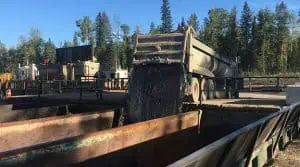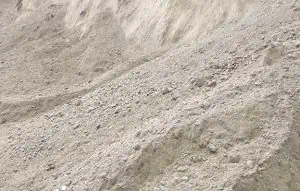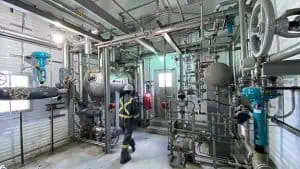

The average oil or gas well produces about 500 tons of oil-based mud drilling waste; less than 1% is recycled. The rest typically gets landfilled, stored in reserve pits, or delivered to a land farm. These options create long-term liabilities and produce significant greenhouse gas emissions as the hydrocarbons biodegrade.
Despite investing considerable time and money in exploring alternative means to manage this waste stream, landfilling remains the number one method due to its economic feasibility. But clean tech waste-to-energy company Recover is hoping to change this.
Cofounder and Recover’s Vice President of Land & Regulatory, Mike Biersteker, explains: “We take a waste stream that otherwise has zero or a negative value and recover the diesel as a transportation fuel. Simultaneously, we’re reducing waste going into a landfill by 33% and avoiding the formation of greenhouse gas emissions that result from landfilling.”
Oil-based muds have operational benefits

When drilling modern shale natural gas or oil wells, operators select oil-based muds due to their improved ability to drill faster and longer within shale formations. In the United States, diesel is the predominant fluid used in these muds. The fluid is used for flushing the drilled solids from the well and bringing the solids back to the surface.
Once at the surface, the oil and gas company tries to recover as much mud as possible. However, a significant volume of oil remains on the drilled solids due to current limitations with solids handling technology. The oil and gas company must dispose of the drilling waste at that point.
The waste handling technology is where Recover comes in. After 15 years of research and development, they have found an economical way to recover and recycle the hydrocarbons within this waste stream. By recovering these hydrocarbons, they can avoid the subsequent emissions related to biodegradation.
A multi-step process produces two reusable products

Recover has a solvent extraction process, a time-proven technique leveraged worldwide to extract many other biofuels. But Recover has adapted the technique and added steps. Through its specialized application, the solvent dissolves oil-based mud into a solution. The liquid phase is sent to a distillation tower where the solvent boils, evaporates, and is collected and converted from vapor to liquid again for reuse. Since the diesel has a higher boiling point, it collects in the tower bottom.
“Through our patented clean-tech process, we are taking advantage of different boiling points to separate, capture, and use these valuable materials, each for their respective purposes,” Stan Ross, President, CEO, and Cofounder explains.
The solids phase is ejected and called Recover Dry™. It is suitable for reuse as stabilization material at industrial landfills or road base material.
The environmental benefits of the Recover technology are obvious. Life Cycle Associates, a leading greenhouse gas life cycle firm based in California, reports reductions of 855 metric tons of emissions generated by 500 tons of landfilled mud drilling waste.
Ross puts these figures in perspective: An automobile emits about 10 tons of greenhouse gas annually, so mitigating emissions from a single well compares to taking 85 cars off the road. Carbon impact adds up: there are nearly a million oil and gas wells in the U.S. alone [Ref].
Making the economics sustainable

Unlike most of its peers in the green space, there is no cost to being more sustainable. Generators pay no processing fees. Recover’s revenue comes from recovering and selling its diesel fuel.
“That’s how we make our model economical, and by being economical, we are truly sustainable. We don’t believe in being green at any expense. If an environmentally friendly process costs more than the status quo, it’s a harder sell to any industry – companies won’t always buy in,” Biersteker says.
He and Ross are unaware of any other technologies attempting to accomplish what Recover is doing other than niche thermal processes where heat is applied to the drilling waste to evaporate the diesel. But that process comes with high operating costs. Getting the diesel to boil off in its fractions requires tremendous energy, increasing the carbon footprint of the recovered diesel.
It’s not just Recover’s multi-step process that stands out. How the firm leverages equipment is unique.
“Drilling waste contains a lot of very abrasive solids. They destroy machinery. Off-the-shelf options to address this challenge are limited or unproven. We modified our processing equipment to work well with this viscous, abrasive waste stream,” Ross says.
Opportunities in the U.S. backed by specialized O&G Environmental Engineers
Recover operates a commercial demonstration facility in Canada and is launching a facility in Howard County, Texas. The expansion into the Permian Basin requires SCS Engineers O&G specialists’ technical support.
Recover sought a professional environmental firm with solid permitting experience and a deep bench. SCS Engineers works closely and well with the Texas Railroad Commission. SCS designed Recover’s stormwater and spill control plans and provided preliminary land contour and groundwater investigative work.
“SCS’s track record with the regulators and ability to get through the permitting process efficiently and safely weighs big because time is money,” Biersteker says. “Regulators need to know we’re working with a highly regarded environmental engineering firm.”
While vetted during years of research and development, Recover’s innovative approach is new to the Railroad Commission. There were a lot of details that needed solid explanations backed by science.
The permitting piece of the puzzle is more than providing technical information, especially with new technology.
“Our team clearly described how drilling waste is generated, delivered, off-loaded, and processed at the Recover facility. We explained to regulators how the separated materials would be collected and moved to the next stage, including diesel recovery and dramatically reduced volumes for final disposal,” says O&G National Expert Neil Nowak and the SCS project director.
“This is a people business. You have to gain regulators’ trust. Our engineering seal means the processes are thoroughly vetted and exactly done as they should be,” Nowak says.
Every recycled drop does not have to be produced new
Recover is gaining traction as it reaches out to oil and gas companies. It’s an easy pitch because who doesn’t want to see waste recycled and reused while reducing their environmental footprint?
“We get their attention when we tell them about the value add we bring to the table. They will incur no processing costs. Clients see that they reduce their liability significantly while lowering their greenhouse gas emissions, leaving them time to focus on what they do,” Ross says.
The benefits of managing this challenging but potentially lucrative stream go further. Biersteker points out:
Additional Resources: